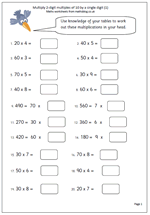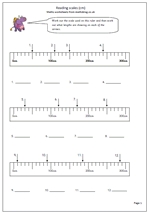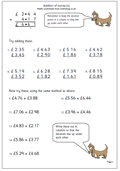Here we have another page to help with counting on in tens from a 2-digit numbers. A little care needs to be taken with these as the question asks,
“How many tens did you count?”
So, when counting in tens from 23 to 43 the answer is 2 (tens), not twenty.
Many children (and adults) count out loud and use their fingers to work out the answer to this type of question, holding out one finger each time ten more is added. Nothing wrong with this but care needs to be taken that ten is not counted when saying the first number out loud.









